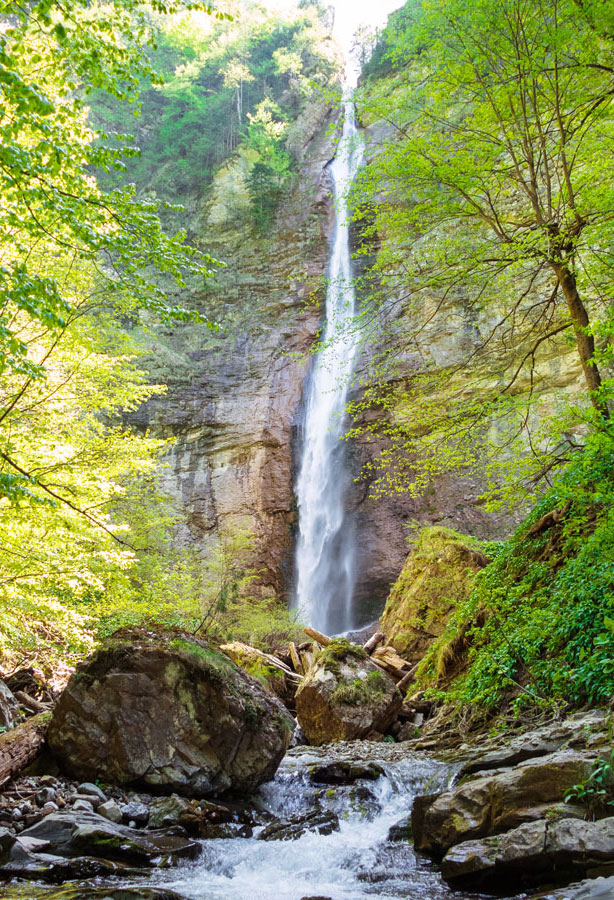Over half of the world’s animal and plant species call rainforests home. These incredibly diverse ecosystems are found on every continent except Antarctica and play an essential role in absorbing Earth’s greenhouse gasses — earning them the nickname the “lungs of the planet.” Dive into the fascinating flora and fauna of eight of the world’s most biodiverse rainforests.
Daintree Rainforest – Australia
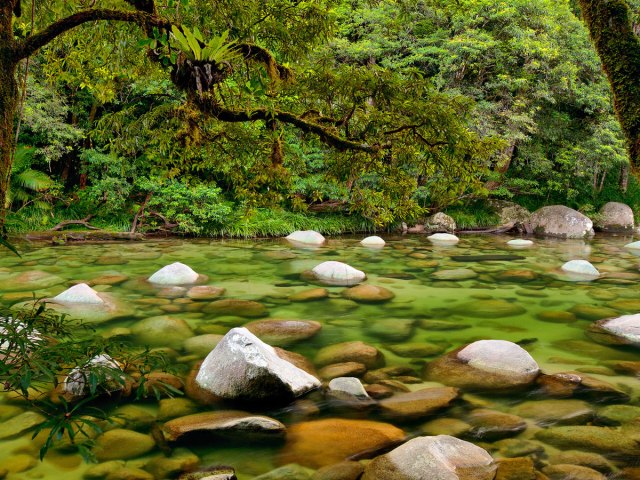
At 180 million years old, the Daintree Rainforest in northeastern Australia is the world’s oldest tropical rainforest. If you visit, you might like you’ve landed on a film set, where you’ll be surrounded by beautiful jungle and plunging 400-foot-tall waterfalls. That’s no coincidence: The rainforest reportedly inspired director James Cameron when creating the 2009 sci-fi movie Avatar. Rare and endemic animals to watch for include southern cassowary birds, Bennett’s and Lumholtz’s tree kangaroos, lesser sooty owls, and Australia’s largest native carnivore, the spotted-tail quoll.
Daintree is part of the Wet Tropics of Queensland, officially recognized as a UNESCO World Heritage Site since 1988. It also happens to be one of the only places on Earth where two World Heritage Sites meet — Daintree’s deserted, breathtaking beaches border the Great Barrier Reef. Visitors will find plenty to do and see — from taking river cruises along the scenic Daintree River (where saltwater crocodiles linger) and eco walks along aerial walkways and viewing platforms to horseback riding and zipping across the forest canopy on the Skyway Rainforest Cableway. Like most of the world’s rainforests, Daintree also suffers from deforestation, mostly due to livestock pastures.
Amazon Rainforest – South America
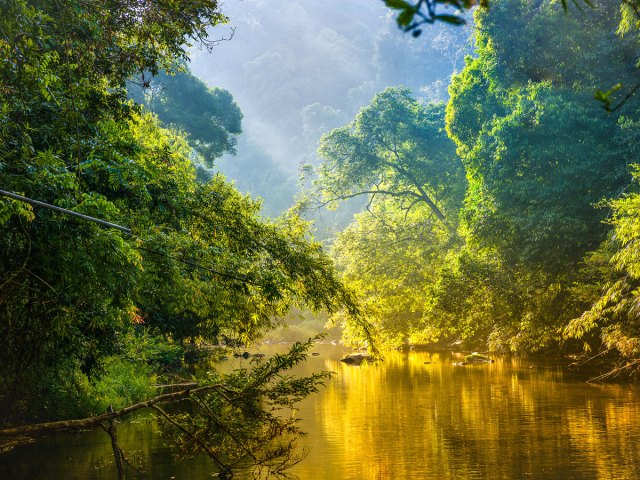
Covering roughly 2.1 million square miles across Brazil, Peru, Colombia, Bolivia, Ecuador, Venezuela, French Guiana, Suriname, and Guyana, the Amazon Rainforest is the world’s best-known and largest rainforest. The mighty Amazon River that flows through the rainforest is the world’s largest river by volume, while the surrounding forest is buzzing with animals, insects, and plants.
The Amazon is home to more species than any other terrestrial ecosystem on Earth — 10 to 30% of the world’s species by some estimates. Hiding in the canopy are numerous primates, slow-moving sloths, and brightly colored macaws. Jaguars, pumas, anacondas, and giant anteaters hunt for prey along the forest floor. Alarmingly, the Amazon Rainforest decreases in size daily due to massive deforestation. Farming, livestock grazing, illegal logging, mining, and more recently, devastating human-caused fires have caused accelerated losses. If you’re interested in supporting efforts to save the Amazon, check out these suggestions on how to help.
Tongass National Forest – Alaska
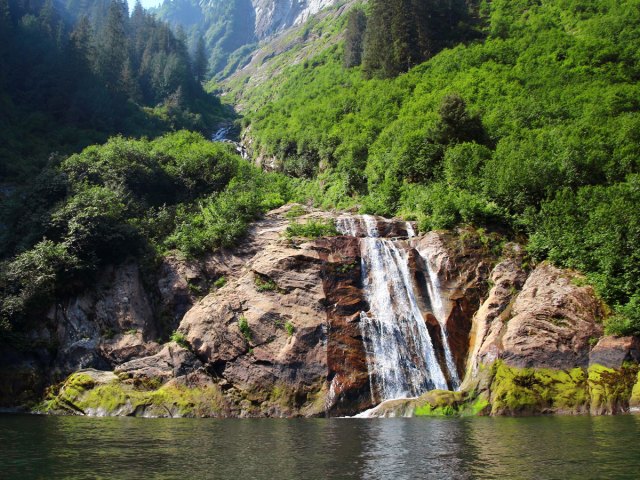
This approximately 26,560-square-mile temperate rainforest is the United States’ largest forest, covering most of southeastern Alaska. Together, the Tongass National Forest and British Columbia’s Great Bear Rainforest form Earth’s largest temperate rainforest. Temperate rainforests differ from tropical rainforests in that they receive less precipitation, see cooler temperatures, and have a slower decomposition of dead organic matter, creating nutrient-rich soil.
The region covers an island archipelago surrounding the dramatically impressive Inside Passage, so be prepared for breathtaking views and wildlife such as bears, eagles, orcas, wolves, beavers, and spawning salmon. Towering stands of ancient western hemlock and Sitka spruce trees dominate the canopy layer, soaring 100 to 225 feet tall, respectively. The USDA Forest Service operates three visitor centers and multiple viewing areas, making it easy for visitors to enjoy the region’s splendor.
Threats to the Tongass include industrial clearcut logging. In 2001, the Forest Service established the Roadless Area Conservation Rule to protect 60 million acres of national forest (including the Tongass) from this type of logging that leaves swaths of devastation behind. However, in 2020 nine million acres of Tongass land were removed from the rule’s protection, leading conservationists and many other groups to protest. Learn more about how you can help with the Alaska Wilderness League.
Kinabalu Park – Malaysia
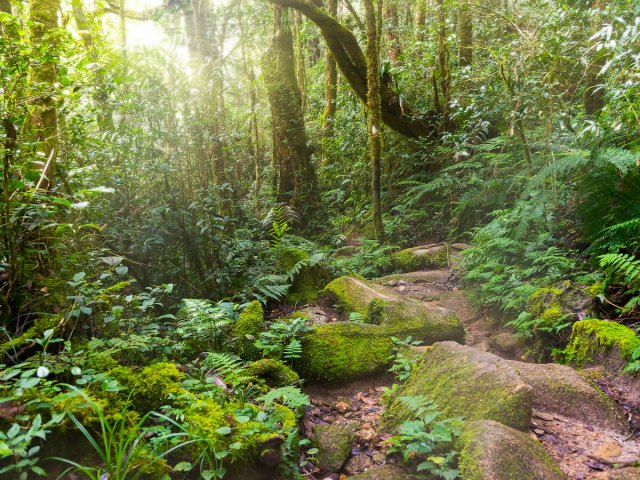
Kinabalu Park became Malaysia’s first UNESCO World Heritage Site, earning a designation in 2000 for its role as one of the world’s most important biological sites. Located on the island of Borneo’s northern tip, this 130-million-year-old rainforest is home to over 5,000 species of flora and fauna and features four climate zones. Mount Kinabalu soars 13,435 feet over the 291-square-mile jungle.
Kinabalu Park is one of the few places in the world to see the rafflesia, a flowering plant infamous for smelling like a dead corpse during the three to four days it blooms after a six-to-nine month growing season. Another of the park’s unique inhabitants is the giant Malaysian pitcher plant, which eats insects and even small birds, lizards, rats, and frogs.
Santa Elena Cloud Forest Reserve – Costa Rica
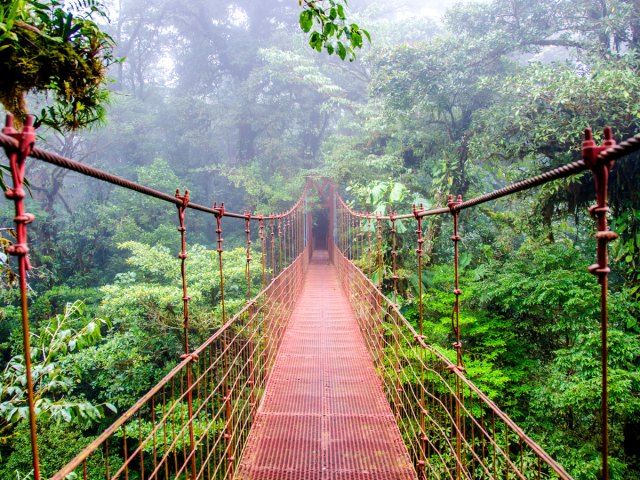
Many visitors know about Costa Rica’s Monteverde Cloud Forest Biological Preserve, but a visit to the nearby and less-crowded Santa Elena Cloud Forest Reserve is well worth a trip. A cloud forest earns its name due to the persistent, canopy-level cloud cover, which is more of a mist created from the high elevation and humidity. Stroll along the trails and hanging bridges where you’ll spot countless birds, including the elusive green and red resplendent quetzal. The reserve has structures encouraging quetzals to nest in a protected area (easily visible from a hiking trail).
Spider monkeys, sloths, pumas, jaguars, and jaguarundi are among some of the mammals that live here. To see the most animals and unique plants, take a private guided tour early in the morning. The reserve also contains observation platforms and towers with spectacular views of the Arenal, Rincón de la Vieja, Tenorio, and Miravalles Volcanoes.
Congo Rainforest – Africa
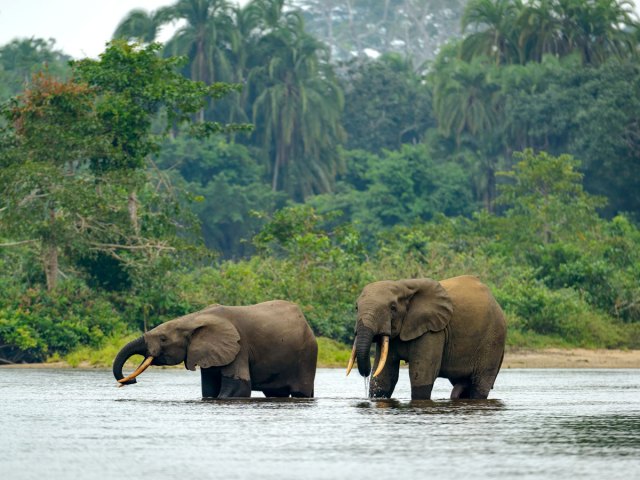
The world’s second-largest tropical rainforest, covering 387,261 square miles lies in Central Africa, spans the Democratic Republic of Congo, Cameroon, Republic of Congo, Central African Republic, Equatorial Guinea, and Gabon. About 30% of the roughly 10,000 plant species are endemic, and large, endangered animals such as chimpanzees, forest elephants, gorillas, buffalos, and bonobos live here. The world’s second-largest river by volume, the Congo River, flows through the rainforest. Trees in the Congo Rainforest tend to grow taller and slightly less dense than other tropical rainforests because elephants, gorillas, and other large herbivores eat smaller trees, reducing competition for resources.
Until about 10 years ago, the Congo Rainforest’s deforestation rates were among the world’s lowest. However, industrial logging has led to significantly faster deforestation, and easier access from logging roads has created a poaching epidemic of forest elephants in some areas. The World Wildlife Fund is one of many groups working to preserve this vital resource by working with indigenous peoples and local communities who rely on its water, food, shelter, and medicine.
Perućica – Bosnia and Herzegovina
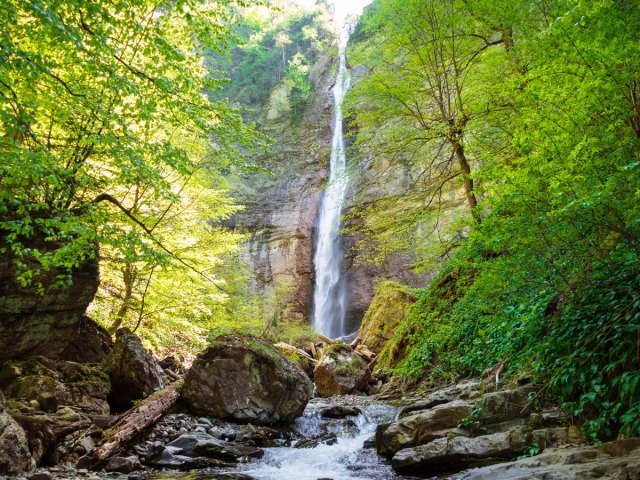
Most people probably don’t think of Europe when they hear the word “rainforest,” but head to southeastern Bosnia and Herzegovina and you’ll be pleasantly surprised to find Perućica in Sutjeska National Park. This unspoiled, 20,000-year-old forest is one of Europe’s last remaining primeval rainforests (and is awaiting approval to become an official UNESCO World Heritage Site). Perućica occupies about 3,500 acres of the 43,000-acre Sutjeska National Park, with sections so dense they’ve never been fully explored. Protected from commercial logging, some of the rainforest’s 200-foot-tall beech and endemic black pine trees are 300 years old.
One of Perućica’s notable residents is the Balkan chamois, a goat-antelope species native to European mountain ranges. Bears, wolves, foxes, lynxes, wild cats, mink martens, wild boars, badgers, and wild goats also roam this incredibly preserved forest. Hiding within the rugged mountains and sweeping valleys is the stunning 246-foot-tall Skakavac Waterfall, but visitors will find it’s well worth the hike.
Hoh Rainforest – Washington
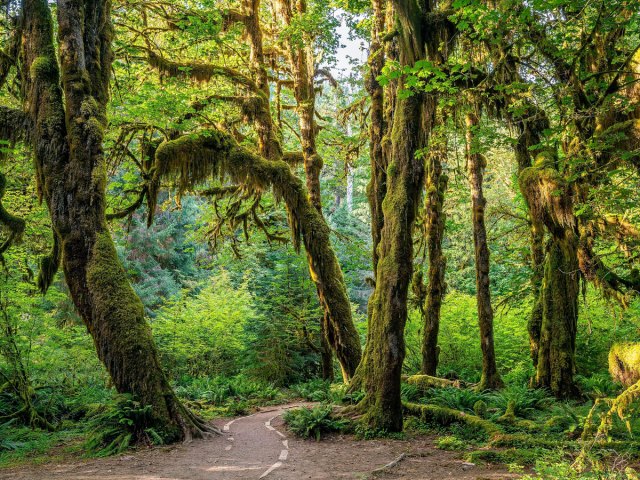
If you want to visit a rainforest so lush and green it almost seems surreal, look no further than the Hoh Rainforest on Washington’s Olympic Peninsula. Situated within Olympic National Park, the Hoh is the wettest forest in the contiguous United States, receiving more than 150 inches of rain annually. Prevalent mist and fog add the equivalent of 30 more inches, making the Hoh also one of the world’s lushest rainforests. Endless acres of soaring trees draped in moss and hanging ferns create an ethereal, timeless landscape, so much so that the Hoh earned a spot on the UNESCO World Heritage Site list. Start at the Hoh Rainforest Visitor Center, where you can find maps for self-guided trails or join guided walks during the summer.
More from our network
Daily Passport is part of Inbox Studio, which publishes content that uplifts, informs, and inspires.






